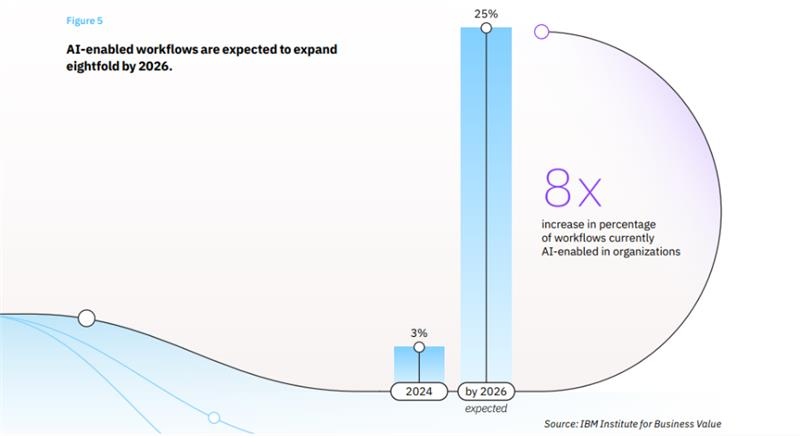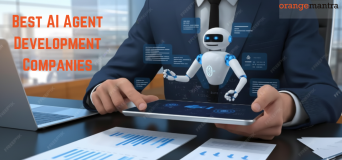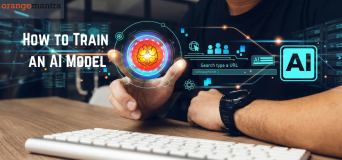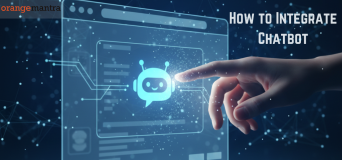
Agentic AI marks the next evolution of artificial intelligence, enabling systems to act autonomously and make goal-driven decisions. Yet, nearly 50% of Agentic AI projects may fail by 2027 without clear ROI models. Businesses focusing on small, measurable outcomes can unlock real value and long-term scalability.
If a recent Gartner forecast is correct, nearly half of all Agentic AI projects will be scrapped by the end of 2027. For anyone who is deeply curious about the future of AI, this statistic is both a warning and a wake-up call. Agentic AI is here, but its path to value is fraught with risk.
Digging deeper, the reasons for this high failure rate by Gartner are genuine. The promise is immense, but the execution is tricky. So, how do you ensure your project lands in the successful 60% that delivers tangible value?
Table of Contents
The Agentic AI Imperative: By the Numbers
The forecast of project failures isn’t a reason to avoid Agentic AI but a reason to master it. The data confirms this shift is a strategic necessity:
- Rapid Adoption: AI-enabled workflows are set to expand from 3% in 2024 to 25% by 2026. {Source: IBM}
- Executive Mandate: A decisive 70% of executives believe Agentic AI is both important to their future and market-ready today. {Source: IBM}
- Tangible Efficiency Gains: By 2026, 83% of executives expect AI agents to dramatically improve efficiency by handling repetitive tasks at above-human speeds. {Source: IBM}
- Massive Market Momentum: Reflecting this confidence, the market is projected to grow from $7.06B in 2025 to $93.20B by 2032. {Source: MarketsandMarkets}
- Embedded in Enterprise Software: Agentic AI will become a standard feature in software, embedded in 33% of enterprise applications by 2028, up from under 1% today. {Source: Gartner}
The transition is inevitable. The only question is whether your projects will succeed or fail.
The answer lies in your ROI model of Agentic AI solutions. Let’s break down the most effective frameworks for building and justifying a winning Agentic AI investment.
Why Agentic AI Projects Fail: The Top Barriers to ROI
If that Gartner statistic feels a little too close for comfort, you’re not alone. It tells us that the brilliance of the technology alone isn’t enough. The gap between a stunning demo and a production system that actually pays for itself is wider than we think.
So, what’s causing the stumble? After diving into both the technical and business realities, we’ve found that the barriers aren’t mysterious. If we look closely enough, the problems with Agentic AI systems are practical, underestimated, and often rooted in how we approach these projects from the start.
Let’s break down the most common culprits derailing Agentic AI ROI.
Unmanageable Complexity
We get excited and build intricate chains of agents. First – a planner, second – an executor, then – a validator, all talking to each other.
But this doesn’t create a smart employee. What it creates is a Rube Goldberg machine. The complexity of managing their interactions, state, and communication becomes a nightmare.
This architecture leads to exploding “reasoning costs.” Every hand-off between agents costs time and money. The system becomes an unmaintainable black box where the operational expense completely dwarfs the value it was supposed to create.
Ignoring the “Value” Factor
This is perhaps the most common mistake of Agentic AI. Companies invest in Agentic AI because it’s the next big thing, not because they’ve identified a specific, messy business problem it can solve. They aim to automate a complex and poorly documented process that even humans find confusing.
The project scope balloons uncontrollably. Without a well-defined goal, the AI agent solution is set up for failure. Stakeholders see no measurable progress against key metrics, confidence plummets, and the plug gets pulled.
The Trust Gap
We give an agent autonomy, and it does something… unexpected. Maybe it misreads a client email and makes a costly error in a database, or it misinterprets a command. Suddenly, the promise of “set it and forget it” vanishes.
This results in panicked teams’ reining in the autonomy and implementing so many human-in-the-loop checkpoints that all the efficiency gains are lost. You end up with an expensive system that requires constant, expensive babysitting. This erosion of trust kills any chance of scaling the Agentic AI solution.
The Poor Data
Agents need real-time, high-quality, structured data from multiple sources (APIs, databases, documents) to make intelligent decisions. The reality for most of us? Legacy systems, siloed data, and inconsistent formats.
The bad data leads to your team spending 80% of their time and budget just wrestling with data plumbing and integration to make the agent function, rather than on making it valuable. The agent, starved of good data, produces unreliable outputs, leading to the classic “garbage in, garbage out” problem but now with the power to take autonomous, costly action.
The Budget Black Hole
Unlike traditional software with predictable server costs, Agentic AI runs on a consumption model. The AI agent development costs are driven by API calls and computational steps. A slight change in an agent’s workflow can lead to a 10x surge in cost with no warning.
It becomes impossible to forecast expenses accurately. A project that seemed profitable in a controlled test suddenly becomes a financial sinkhole at scale. This unpredictability makes any CFO understandably nervous and is a fast track to getting your budget canceled.
Image Source: IBM
How to Build Bulletproof Agentic AI ROI Models?
So, we’ve diagnosed the patient. We know what’s making so many Agentic AI projects sick. The question now is, what’s the cure?
As a leading AI development company, we have built a strategic framework as a cure: a shift in mindset from seeing this as a speculative tech purchase to treating it as a deliberate value-creation engine.
A bulletproof ROI model is foundational thinking at the very beginning. It’s what ensures you’re in the successful 60%. Let’s build that foundation together.
Embrace the “Crawl, Walk, Run, Fly” Philosophy
This is the single most important principle. This Agentic AI development approach directly counters the “Ill-Defined Use Case” and “Trust Gap” barriers. It delivers value in weeks and builds confidence and funding for further investment.
The allure of a fully autonomous “fly” mode is strong, but it’s where projects crash and burn.
Crawl: Start with a single, hyper-specific task. Skip automating the whole department. Focus on automating a 30-minute, daily reporting task that everyone hates. The goal is a quick, undeniable win.
Walk: Connect a few tasks into a simple workflow. Maybe your agent can now generate that report and email a summary to a distribution list.
Run: Expand the agent’s scope to handle a full business process with some decision-making autonomy, but within a well-defined “sandbox” and with human oversight on critical steps.
Fly: This is the ultimate goal of end-to-end autonomy. But it’s only possible after you’ve successfully navigated the previous stages.
Map the “Agent-Augmented Process” Before a Single Line of Code
You cannot automate what you don’t understand. Before any Agentic AI development, you must map the entire existing business process the agent will touch.
This practice surgically exposes the “Data & Infrastructure Debt” and “Complexity Trap” early on. It forces you to solve data integration problems on a flowchart, not in production when costs are spiraling.
Identify Decision Points: Where does a human currently make a choice? What information do they need?
Pinpoint Data Sources: Where does that information live? Is it in a clean API, a messy PDF, or someone’s head?
Define Success & Failure: What does a perfect outcome look like? What are the most common errors?
Define Your “Minimum Viable Agent” (MVA)
Inspired by the Lean Startup methodology, your MVA is the simplest version of your agent that can deliver core value and, crucially, generate learning.
Your MVA is not a “dumb” bot. It’s a focused agent that does one thing exceptionally well, even if its world is small.
The success of your MVA is not measured by its intelligence, but by its impact on a single, key business metric.
The MVA forces discipline. It prevents “scope creep” and creates a clear, achievable milestone. Succeeding with your MVA is the proof-of-concept that unlocks the next round of funding.
Shift from Cost-Center to Value-Center Thinking
Stop justifying Agentic AI only by the hours it saves. While efficiency is important, the most powerful Agentic AI ROI comes from elsewhere.
This broader perspective captures the full spectrum of value and makes your business case resilient and compelling to CFOs. It moves the conversation from “What will this cost?” to “What is the opportunity cost of not doing this?”
Frame your Agentic AI ROI model around four value pillars given in the next section of this blog.
Image Source: IBM
The Four ROI Models for Agentic AI Investments
We’ve built our bulletproof framework. Now, let’s put it to work. Where do you actually place your bets to get a tangible return?
Based on where we’re seeing early success, Agentic AI investments are crystallizing into four powerful archetypes.
Each of these Agentic AI ROI strategic frameworks comes with a distinct primary goal, a clear path to ROI, and a specific way to overcome the barriers we’ve discussed.
Your task isn’t to pick one forever, but to identify which model is the right strategic starting point for your first “Crawl” stage.
Model 1: The Operational Excellence Model
The primary goal of this Agentic AI ROI model is to systematically reduce operational costs and enhance process efficiency by automating repetitive cognitive work.
In terms of ROI, this model delivers the most straightforward financial return. ROI is calculated through direct labor cost savings, reduced process cycle time, and improved resource allocation. It’s about enhancing gross margin by making core operations leaner and faster.
Ideal First Project: Automating internal financial reporting, processing invoices and purchase orders, or managing employee onboarding workflows.
Formula: ROI = (Labor Savings + Speed Value) / Implementation Cost
Calculate: [(Weekly Hours Saved × $Rate × 52) + (Days Saved × $Value/Day)] / Dev Costs
This model could be a smart start as it directly counters the “Trust Gap”. You can start with a very defined, low-risk task and implement human oversight without negating the value.
The outcome is easy to measure where you get hours saved. That is why it makes the ROI undeniable to stakeholders.
Model 2: The Risk Mitigation & Compliance Model
This Agentic AI ROI model aims to proactively minimize financial, operational, and reputational risk by eliminating human error in high-stakes processes.
Here, the value is in loss prevention. ROI is realized through avoided fines, reduced rework costs, lower insurance premiums, and enhanced regulatory compliance. It turns quality control from a sampling exercise into a 100% inspection regime.
Great project to start with: An agent that reviews legal contracts for non-standard clauses, validates code for security vulnerabilities before deployment, or audits financial transactions for anomalies and compliance.
Formula: ROI = (Risk Avoided + Compliance Savings) / Monitoring Costs
Calculate: [(Historical Losses × Risk %) + (Audit Hours × $Rate)] / Tooling Costs
This model tackles the “Ill-Defined Use Case” head-on by focusing on processes with a clear definition of “right” and “wrong.” It augments human experts rather than replacing them.
The philosophy of this Agentic AI ROI model is to build trust and demonstrate value by catching costly errors that would have otherwise been missed.
Model 3: The Top-Line Growth Model
With this Agentic AI ROI model, you can directly accelerate revenue generation by supercharging customer-facing functions and unlocking new market opportunities.
This is a top-line growth model. The Agentic AI ROI is measured through incremental revenue, higher conversion rates, increased customer lifetime value, and market share expansion.
Best starter project: A hyper-personalized marketing agent that segments audiences and generates tailored campaigns, or a sales enablement agent that qualifies leads in real-time and prepares strategic briefs for the sales team.
Formula: ROI = (Revenue Growth + CLV Increase) / Implementation Investment
Calculate: [(Additional Deals × $Deal Size) + (Upsell × Influence %)] / Tech Costs
This Agentic AI ROI model addresses the “Unpredictable Cost Structure” by directly linking the agent’s activity to revenue. If the agent helps close one additional deal, its cost is instantly justified. This creates a clear, value-based argument for further investment.
Model 4: The Strategic Innovation & R&D Model
The main goal of this Agentic AI model is to augment human creativity and research & development to accelerate time-to-market and secure a long-term competitive advantage.
The ROI of this Agentic AI development model is measured in patents filed, reduced R&D cycles, first-to-market advantages, and the discovery of new products or business models.
Ideal First Project: An agent that synthesizes thousands of academic papers and patents to hypothesize new research pathways, or one that analyzes global market trends to generate and validate novel product concepts.
Formula: ROI = (Time-to-Market Value + IP Creation) / Research Costs
Calculate: [(R&D Months Saved × $Market Value) + (Patents × $Value)] / Infrastructure
While higher-risk, starting small here counters the “Complexity Trap.” Instead of building a massive R&D agent, you start with a “Discovery Assistant” for a specific research team. This delivers targeted insights quickly and provides the crucial learning necessary for more ambitious projects later.
3 Ways to Maximize Your Agentic AI ROI After Launch
You’ve built your foundation. You’ve embraced the “Crawl, Walk, Run, Fly” philosophy and have a Minimum Viable Agent delivering value. You’re already ahead of the curve.
But the landscape in 2026 won’t be won by those who simply adopt Agentic AI but by those who master it at scale. Here is how to transition from achieving Agentic AI ROI to maximizing it exponentially.
Implement Tiered Agent Architectures for Compound Efficiency
A single, powerful agent handling everything is the fastest way to burn through your budget. The key to scaling ROI is right-sizing your AI for the task.
The strategy is to deploy a hierarchy of agents. Use smaller, faster, cheaper models (“Specialist Agents”) for routine tasks and reserve your most powerful, expensive models (“Generalist Orchestrators”) for complex reasoning and oversight.
This way you drastically reduce the average “reasoning cost” per task and make complex workflows economically viable.
Your next step should be to audit your most expensive agent. Break its workflow down and identify one simple step that can be permanently offloaded to a cheaper, specialized model.
Create a Centralized “Agent Hub” for Cross-Functional Value
Isolated agents create isolated value. Connected agents unlock value across the entire organization.
You should develop a central platform or protocol that allows agents from different departments to securely share insights and trigger each other’s workflows.
This helps you to enable “ROI Stacking,” where a single data point creates value in multiple business units simultaneously.
After that, you can map the data outputs of your first successful agents. Then, identify one other department that could benefit from that data and initiate a conversation about a simple API handoff.
Institutionalize Learning with Formal Feedback Loops
A static agent delivers linear value, and a learning agent delivers compounding value.
Your strategy should be to move beyond ad-hoc improvements. You should build systematic processes where every human override, correction, and final outcome is captured and used to retrain and refine your agents.
This way, your agentic systems become company assets that appreciate value over time, continuously reducing their error rates and need for human intervention.
For your most critical agent, define one key performance metric (e.g., “human override rate”) and build a simple, structured channel (like a dedicated form or tagging system) to collect the reason for each override.
Conclusion
The message from the data is clear: the era of Agentic AI has arrived. The chasm between a successful pilot and a canceled project is not dug by technical limitations, but by strategic missteps.
Over the course of this guide, we’ve equipped you with the map to navigate this new terrain. You now understand the barriers that derail projects, possess a bulletproof framework to build on, have four proven ROI models to choose from, and most importantly, have the specific formulas to build an undeniable business case.
You have the framework. You have the models. You have the calculations.
The only thing left to do is take the first step.
Begin your Crawl stage today. Identify that first process, apply the formula, and start building your foundation. The successful 60% of organizations in 2027 aren’t waiting. They are building, learning, and scaling right now.
The future belongs to those who build it. Let’s build yours.
FAQs
Q1. Is agentic AI actually delivering a positive ROI?
Right now, the Agentic ROI is highly situational. For well-scoped, repetitive cognitive tasks like automating a complex data analysis report or handling multi-step customer service escalations – the return is massive and undeniable. However, for broad, undefined ambitions, it’s often a money pit. Success depends entirely on starting with a clear problem, not just the technology.
Q2. How quickly can businesses expect to see ROI?
Don’t expect overnight success. For a tightly defined pilot project, you might see tangible results in 3-6 months. However, for a full-scale deployment that’s genuinely transformative, you should plan for a 12–18 month horizon. This timeline includes the crucial phases of integration, testing, refinement, and overcoming unforeseen complications that always arise.
Q3. What are the primary risks that could impact Agentic AI ROI?
The biggest risks are unmanaged complexity and cost. Agentic systems can fail unpredictably, make costly errors on autopilot, and become astronomically expensive if left unchecked. Furthermore, you risk integrating flawed or biased logic directly into your core business processes.
Q4. What is the best strategy for maximizing ROI?
The single most effective strategy is to start small and concrete. Identify one, high-value, repetitive business process and build a single-purpose agent to own it. Measure its performance and cost relentlessly against the old way of doing things. This “crawl, walk, run” approach proves value fast, contains risk, and builds the internal expertise needed for larger deployments.






